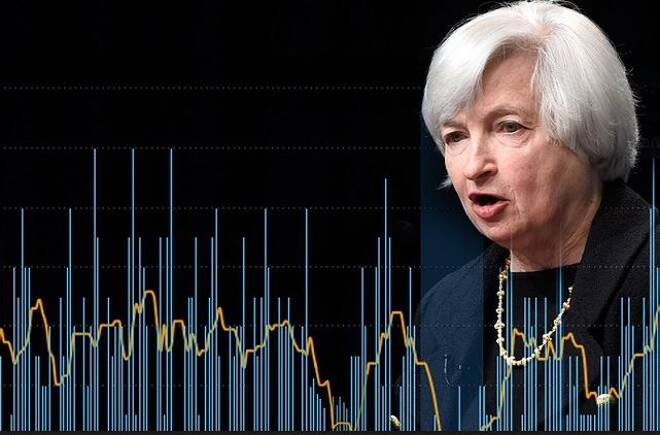Advertisement
Advertisement
Major Clash Between Treasury Speculators and Fed Coming in 2017
By:
A major clash between investors who believe the U.S. economy will heat up enough in 2017 to warrant several rate hikes by the Fed and those who believe
A major clash between investors who believe the U.S. economy will heat up enough in 2017 to warrant several rate hikes by the Fed and those who believe the Fed will only raise rates one or two times next year is coming.
This should affect all the Forex markets because the direction of U.S. Treasury yields essentially drive the major currencies. U.S. Treasury yields set the tone for the rest of the world because all other interest rates are measured against them.
Since investors seek the highest yield, ultimately the interest rate differential between the U.S. Treasury yields and their domestic counterpart yield determine the direction of the Forex pair.
Reaction to Trump’s Plans
Since the election of President-elect Donald Trump on November 8, U.S. Treasury yields have risen substantially. In November, the benchmark U.S. 10-Year Treasury yield posted its biggest monthly gain since the financial crisis in 2009.
The catalyst behind the climb was the prospect of increased spending and radical tax cuts under Trump. These moves have increased inflation expectations, which in turn have increased speculation that the Fed would have to raise rates as many as four times in 2017 just to keep up with inflationary expectations.
Benchmark treasury yields climbed 55 basis points to 2.38 percent in November, their highest level since June 2015 and the biggest monthly climb since December 2009.
Yields have accelerated because Mr. Trump has promised higher infrastructure spending which should lead to larger government deficits. This has, in turn, led bond investors to dramatically shift their outlook for future U.S. inflation.
Last week, Trump appointed a new Treasury Secretary who has hinted at implementing the biggest tax cuts since the Reagan era under the new administration. This is potentially another inflationary move and another reason why the Fed may have to raise interest rates multiple times in 2017.
Fed’s Forecast
Fast-forward to Friday’s U.S. Non-Farm Payrolls report for November. Although a December rate hike is essentially a certainty, the solid, but not spectacular jobs report raised concerns over the path of interest rate increases next year.
The report showed nonfarm payrolls increased by 178,000 jobs last month, but data for September and October were revised to show that few jobs were created than previously reported. Wage growth for the month was just 2.5 percent, compared with expectations of 2.8 percent, unchanged from October. Additionally, the unemployment rate fell to 4.6%, below the 4.9% forecast, but that’s another story.
At the end of the trading session on Friday, many investors went home thinking the jobs report was just strong enough to support the slow and shallow course of interest rate hikes endorsed by the Fed, which expected only two hikes this past September.
Flashpoint
I see a major clash in 2017 because the market seems to be anticipating higher inflation and higher rates in response to Trump’s proposals, while the Fed seems to be focused on jobs growth. Inflation will be the variable next year. If Trump’s policies due drive up inflation then the Fed will be forced to chase inflation with more frequent rate hikes than it appears to be willing to make at this time.
The difference between what the market is anticipating and what the Fed is forecasting is likely to be the source of huge pockets of volatility next year. Now may be a good time to develop a strategy to take advantage of this expected volatility.
About the Author
James Hyerczykauthor
James Hyerczyk is a U.S. based seasoned technical analyst and educator with over 40 years of experience in market analysis and trading, specializing in chart patterns and price movement. He is the author of two books on technical analysis and has a background in both futures and stock markets.
Advertisement
